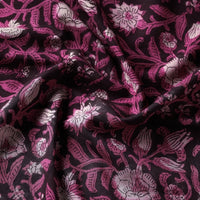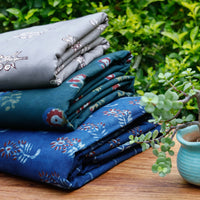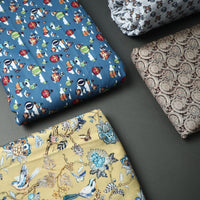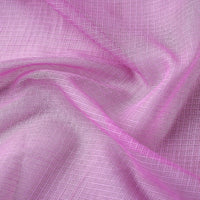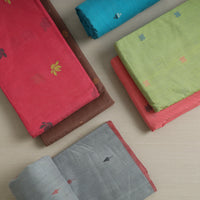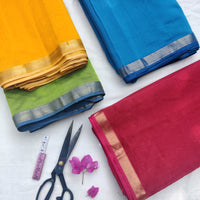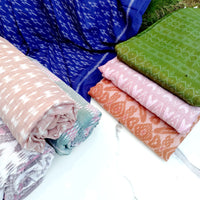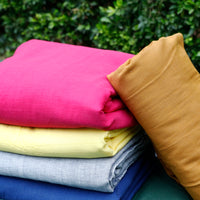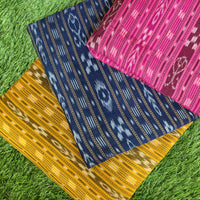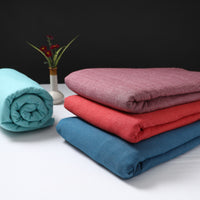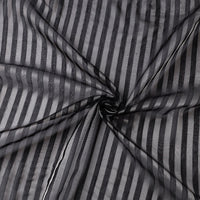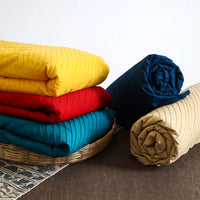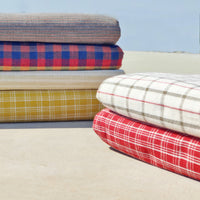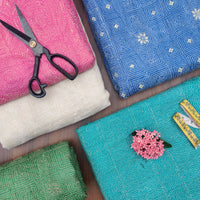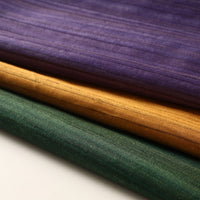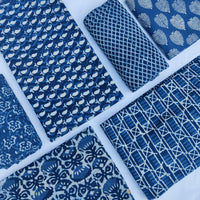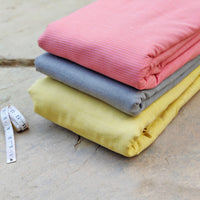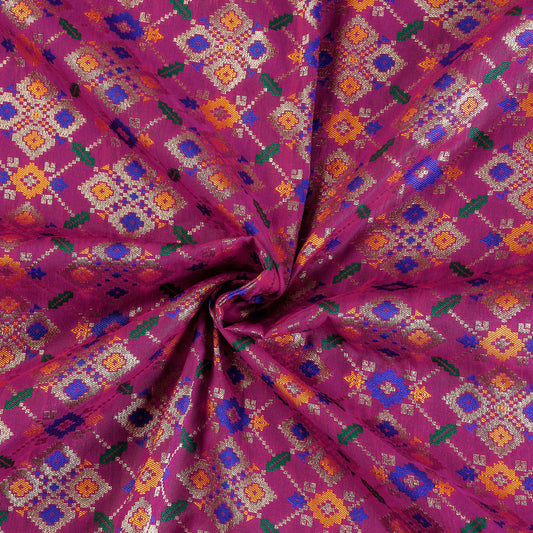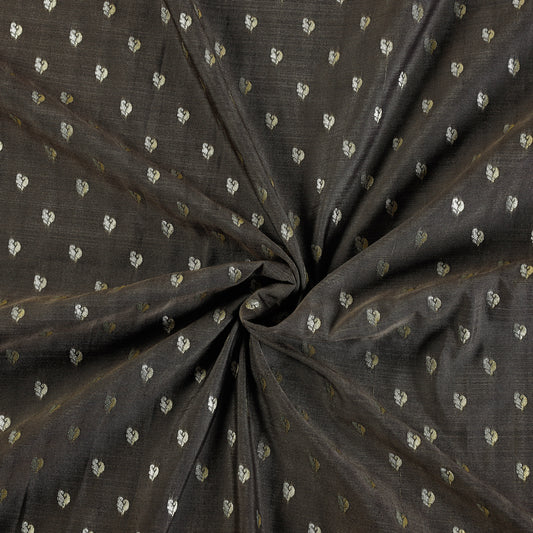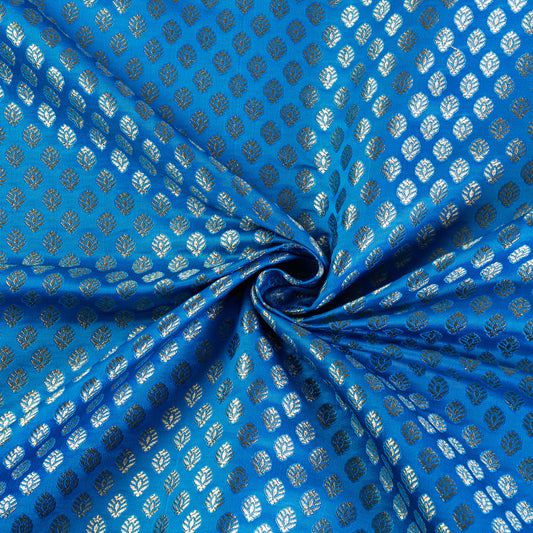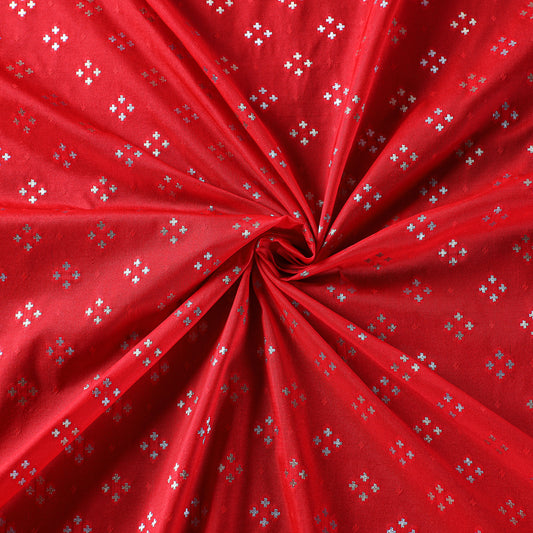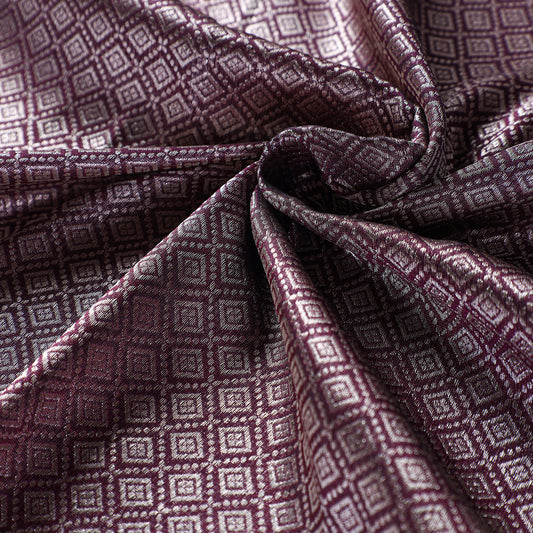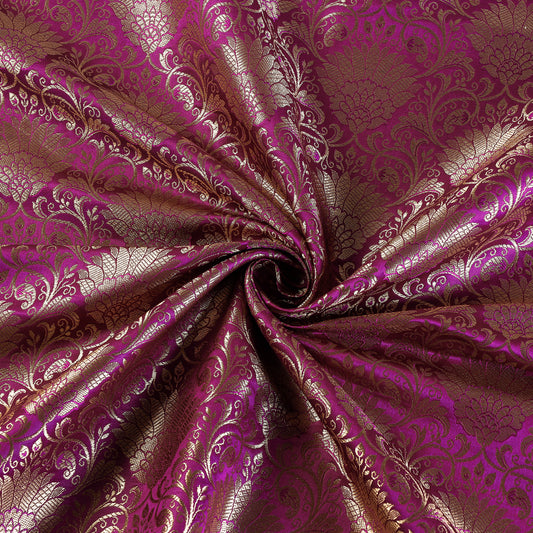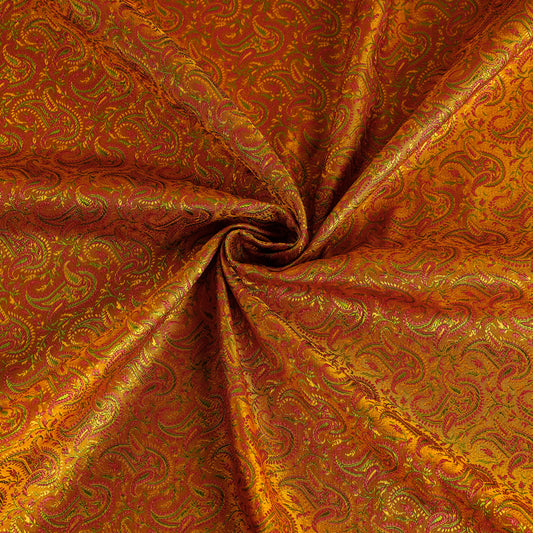The Magic of Silk: A Journey Through Comfort and Elegance
Silk is one of the most beloved fabrics in the world, known for its softness, shine, and luxurious feel. From ancient times to today, silk has been a symbol of elegance and beauty. This remarkable fabric has a rich history and continues to be an essential part of fashion and culture. At iTokri, we celebrate the timeless allure of silk and bring to you the finest handcrafted silk products from artisans across India. Let’s explore the fascinating world of silk, its unique qualities, and how iTokri is helping keep the tradition of silk alive.
The Natural Wonder: What Makes Silk Special?
Silk is a natural fiber that is produced by silkworms, primarily the Bombyx mori species. The process begins when the silkworms spin their cocoons from a single continuous thread of raw silk. This thread, which can be over a mile long, is then carefully unwound to create silk yarn. The natural origins of silk contribute to its exceptional properties, making it a fabric like no other.
1. Softness and Comfort
One of the most cherished qualities of silk is its softness. Unlike many other fabrics, silk feels gentle against the skin, making it ideal for clothing and accessories. Whether it’s a silk saree or a silk scarf, the fabric drapes beautifully and offers unparalleled comfort. This softness is due to the smooth, protein-based fibers that do not cause irritation, making silk perfect for those with sensitive skin.
2. Lustrous Shine
Silk is famous for its natural sheen, which adds a touch of glamour to any outfit. This shine comes from the triangular structure of silk fibers, which allows them to reflect light in various angles. The result is a beautiful, shimmering effect that is both eye-catching and sophisticated. Whether in vibrant colors or subtle pastels, silk always looks elegant and luxurious.
3. Strength and Durability
Despite its delicate appearance, silk is surprisingly strong. It is one of the strongest natural fibers, with a tensile strength comparable to steel. This durability means that silk garments, when cared for properly, can last for years. Silk's strength is not just physical but also metaphorical – it has withstood the test of time as a fabric of choice for the elite and common folk alike.
4. Breathability and Temperature Regulation
Silk is a highly breathable fabric, which makes it comfortable to wear in various climates. It has natural temperature-regulating properties, keeping you cool in the summer and warm in the winter. This versatility makes silk a popular choice for clothing in diverse regions, from the warm plains of India to the cooler hills.
The History of Silk: From Ancient Origins to Modern Day
The history of silk is as rich and varied as the fabric itself. Silk was first discovered in China around 2700 BC, and it quickly became a symbol of wealth and power. The Chinese kept the secret of silk production for centuries, making it one of the most valuable commodities in the ancient world.
1. The Silk Road
The Silk Road was a network of trade routes that connected China to the Mediterranean, allowing silk to reach Europe and other parts of Asia. This trade route not only spread the luxurious fabric but also facilitated cultural exchange, making silk a symbol of cross-cultural connections. The Silk Road played a crucial role in the development of civilizations and the global economy.
2. Silk in India
Silk arrived in India around 300 BC and quickly became an integral part of Indian culture. India is now one of the largest producers of silk, known for its variety of silk types like Mulberry, Tussar, Eri, and Muga. Each type has its unique qualities, and Indian silk is renowned for its diversity and beauty. The traditional silk sarees, such as Kanchipuram and Banarasi, are highly prized for their craftsmanship and elegance.
3. Silk in the Modern World
Today, silk continues to be a popular fabric worldwide, used in everything from haute couture to everyday clothing. The fabric’s natural qualities make it suitable for a wide range of applications, including fashion, home décor, and even medical textiles. Modern technology has also enhanced silk production, making it more accessible while maintaining its luxurious appeal.
The iTokri Story: A Commitment to Tradition and Sustainability
iTokri is more than just an online store; it is a bridge between traditional Indian artisans and the global market. We believe in the power of handcrafted goods to tell stories, preserve culture, and support sustainable livelihoods. Our silk products are a testament to this belief, reflecting the artistry and dedication of India’s finest silk weavers.
1. Supporting Artisan Communities
At iTokri, we work directly with over 500 artisan groups across India. Our goal is to support these communities by providing them with fair wages and a platform to showcase their craft. By purchasing silk products from iTokri, you are not only acquiring a piece of beautiful fabric but also contributing to the livelihoods of artisans and their families.
2. Preserving Cultural Heritage
India’s silk weaving traditions are centuries old, and at iTokri, we are dedicated to preserving these ancient techniques. We partner with artisans who have inherited their skills from generations before them, ensuring that these traditions continue to thrive. Our collection includes a wide range of silk products, from classic sarees to modern accessories, all made with the same care and attention to detail.
3. Emphasizing Sustainability
Sustainability is at the core of iTokri’s values. We are committed to using eco-friendly practices throughout our supply chain, from sourcing raw materials to packaging. Our silk products are made using natural dyes and sustainable production methods, reducing the environmental impact of our operations. Additionally, our packaging is made from recycled materials, further minimizing waste.
The Future of Silk: Innovation Meets Tradition
As we look to the future, iTokri remains committed to blending innovation with tradition. While we honor the age-old techniques of silk weaving, we also embrace modern technology to improve production efficiency and reach a wider audience. Our vision is to continue supporting artisan communities while expanding our offerings to meet the demands of the modern consumer.
1. Expanding Global Reach
iTokri’s global reach allows us to bring the beauty of Indian silk to customers around the world. We are constantly exploring new markets and opportunities to introduce our products to a broader audience. By leveraging online platforms and social media, we aim to connect with customers who appreciate the artistry and craftsmanship of our silk products.
2. Innovating for Sustainability
Sustainability is an ongoing journey at iTokri. We are always seeking new ways to reduce our environmental impact and promote ethical practices. This includes exploring alternative materials, improving energy efficiency, and continuing to support sustainable farming practices. Our commitment to sustainability ensures that our products are not only beautiful but also environmentally responsible.
3. Celebrating Artisan Stories
One of the unique aspects of iTokri is our focus on storytelling. We believe that every product has a story to tell, and we are dedicated to sharing the stories of the artisans behind our silk products. Through interviews, videos, and blog posts, we highlight the people who make our products and the cultural significance of their craft. This personal connection helps our customers appreciate the value of handmade goods and the importance of preserving traditional skills.
Conclusion: Embrace the Beauty of Silk with iTokri
Silk is more than just a fabric; it is a symbol of elegance, tradition, and craftsmanship. At iTokri, we are proud to offer a wide range of silk products that reflect the rich cultural heritage of India. By choosing iTokri, you are not only enjoying the luxury of silk but also supporting artisan communities, preserving ancient traditions, and promoting sustainability.
We invite you to explore our silk collection and discover the magic of silk for yourself. Whether you are looking for a stunning saree, a versatile fabric, or a stylish accessory, iTokri has something for everyone. Shop now and become part of a community that values beauty, craftsmanship, and a brighter future for all.
Frequently Asked Questions (FAQ) about Silk and iTokri’s Silk Collection
1. What is silk, and how is it made?
Silk is a natural fiber produced by silkworms, specifically the larvae of the Bombyx mori moth. The process begins when silkworms spin their cocoons from a single thread of raw silk. These cocoons are then carefully unwound to extract the silk fibers, which are spun into silk threads and woven into fabric. The production of silk involves several steps, including sericulture (the farming of silkworms), reeling, and weaving, all of which require great skill and precision.
2. What makes silk different from other fabrics?
Silk is unique due to its softness, natural sheen, and strength. Unlike synthetic fabrics, silk is a protein-based fiber that feels smooth and gentle against the skin. Its natural luster gives it a luxurious appearance, making it a popular choice for high-end fashion. Additionally, silk is incredibly strong, with a tensile strength comparable to steel, yet it remains lightweight and breathable, offering comfort in both warm and cool climates.
3. What types of silk are available in India?
India is known for its diverse types of silk, each with its own characteristics:
-
Mulberry Silk: The most common and widely produced silk in India, known for its fine texture and luster.
-
Tussar Silk: Also known as "wild silk," Tussar is valued for its natural golden hue and rich texture.
-
Eri Silk: Often called "peace silk" because it allows the silkworms to complete their life cycle, Eri silk is soft, durable, and has a slightly matte finish.
-
Muga Silk: Exclusive to Assam, Muga silk is known for its natural golden color and durability, often used in traditional Assamese garments.
4. How do I care for silk garments?
Caring for silk requires some special attention to maintain its beauty and longevity:
-
Hand Wash: It’s best to wash silk garments by hand using cold water and a mild detergent. Avoid wringing or twisting the fabric.
-
Drying: Lay the garment flat on a clean, dry towel and roll it up to remove excess water. Then, lay it flat to dry away from direct sunlight to prevent color fading.
-
Ironing: If needed, iron silk on a low setting while the fabric is slightly damp, or use a cloth between the iron and the silk to avoid direct heat.
-
Storage: Store silk garments in a cool, dry place, preferably in a breathable fabric bag to prevent moisture buildup and protect the fabric from insects.
5. Why is silk considered an eco-friendly fabric?
Silk is eco-friendly because it is a natural, biodegradable fiber. The production of silk, particularly in traditional sericulture, is sustainable as it supports biodiversity and the livelihoods of local communities. Unlike synthetic fabrics, which are derived from petroleum and do not decompose easily, silk breaks down naturally without harming the environment. At iTokri, we also emphasize using natural dyes and sustainable practices in our silk production to further minimize environmental impact.
6. What makes iTokri’s silk collection unique?
iTokri’s silk collection stands out due to its authenticity, quality, and the connection it fosters with artisan communities. Each piece in our collection is handcrafted by skilled artisans who use traditional techniques passed down through generations. By purchasing from iTokri, you are not only acquiring a beautiful silk product but also supporting sustainable livelihoods and helping preserve India’s rich cultural heritage.
7. How does iTokri ensure the authenticity of its silk products?
At iTokri, we are committed to authenticity and transparency. We work directly with artisan groups and cooperatives across India to source our silk products. Each item is carefully curated to meet our high standards of quality and craftsmanship. Additionally, our team conducts regular quality checks to ensure that every product we offer is genuine and meets the expectations of our customers.
8. What are the benefits of wearing silk?
Wearing silk offers numerous benefits, including:
-
Comfort: Silk’s smooth texture feels gentle on the skin, reducing irritation and making it ideal for sensitive skin.
-
Breathability: Silk is highly breathable and helps regulate body temperature, keeping you cool in the summer and warm in the winter.
-
Luxurious Appeal: The natural sheen of silk adds a touch of elegance to any outfit, making it perfect for both casual and formal occasions.
9. How does iTokri contribute to the preservation of traditional silk weaving?
iTokri plays a vital role in preserving traditional silk weaving by partnering with artisan communities who specialize in these ancient techniques. We provide a platform for these artisans to showcase their work to a global audience, ensuring that their skills are valued and sustained. By promoting traditional silk weaving, iTokri helps keep these cultural practices alive, allowing them to be passed down to future generations.
10. Can I customize silk products from iTokri?
Yes, iTokri offers customization options for certain silk products. Whether you’re looking for a specific design, color, or size, our team can work with you to create a bespoke item that meets your needs. This service allows you to enjoy a truly unique piece of silk craftsmanship that reflects your personal style. Please contact our customer service team for more details on customization options.
सिल्क की जादू: आराम और शान का सफर
सिल्क दुनिया के सबसे प्यारे कपड़ों में से एक है, जो अपनी मुलायमियत, चमक और शानदार अनुभव के लिए जाना जाता है। प्राचीन काल से लेकर आज तक, सिल्क एक शान और सुंदरता का प्रतीक रहा है। यह अद्भुत कपड़ा समृद्ध इतिहास रखता है और फैशन और संस्कृति का एक महत्वपूर्ण हिस्सा बना हुआ है। iTokri पर, हम सिल्क के इस सदाबहार आकर्षण का जश्न मनाते हैं और आपको भारत के कारीगरों द्वारा तैयार किए गए बेहतरीन हस्तनिर्मित सिल्क उत्पाद प्रस्तुत करते हैं।
सिल्क की खासियतें
सिल्क प्राकृतिक फाइबर है जिसे रेशम के कीड़े बनाते हैं। इसका नरमपन, चमक और मजबूती इसे अद्वितीय बनाते हैं। सिल्क गर्मियों में ठंडक और सर्दियों में गर्मी प्रदान करता है, जिससे यह विभिन्न मौसमों के लिए उपयुक्त है।
सिल्क का इतिहास
सिल्क की खोज सबसे पहले चीन में हुई थी और यह शान और शक्ति का प्रतीक बन गया। भारत में सिल्क 300 ईसा पूर्व में पहुंचा और यहां की संस्कृति का महत्वपूर्ण हिस्सा बन गया। आज, भारत विभिन्न प्रकार की सिल्क के लिए प्रसिद्ध है जैसे कि मल्बरी, तुस्सर, एरी, और मूगा।
iTokri की कहानी
iTokri सिर्फ एक ऑनलाइन स्टोर नहीं है; यह पारंपरिक भारतीय कारीगरों और वैश्विक बाजार के बीच एक पुल है। हम हस्तनिर्मित वस्त्रों की कला को संरक्षित करने और स्थायी आजीविका का समर्थन करने में विश्वास रखते हैं। iTokri के सिल्क उत्पाद प्रामाणिकता, गुणवत्ता और भारतीय शिल्पकारों की कला का प्रतीक हैं।
भविष्य की दृष्टि
iTokri का लक्ष्य पारंपरिक तकनीकों को संरक्षित करते हुए नवीनता के साथ जोड़ना है। हम वैश्विक स्तर पर अपने उत्पादों को विस्तारित करने और सतत विकास के नए तरीकों की खोज करने के लिए प्रतिबद्ध हैं।
निष्कर्ष
iTokri पर सिल्क के जादू का अनुभव करें और इस खूबसूरत कपड़े के साथ भारतीय संस्कृति की समृद्ध धरोहर का हिस्सा बनें।

















